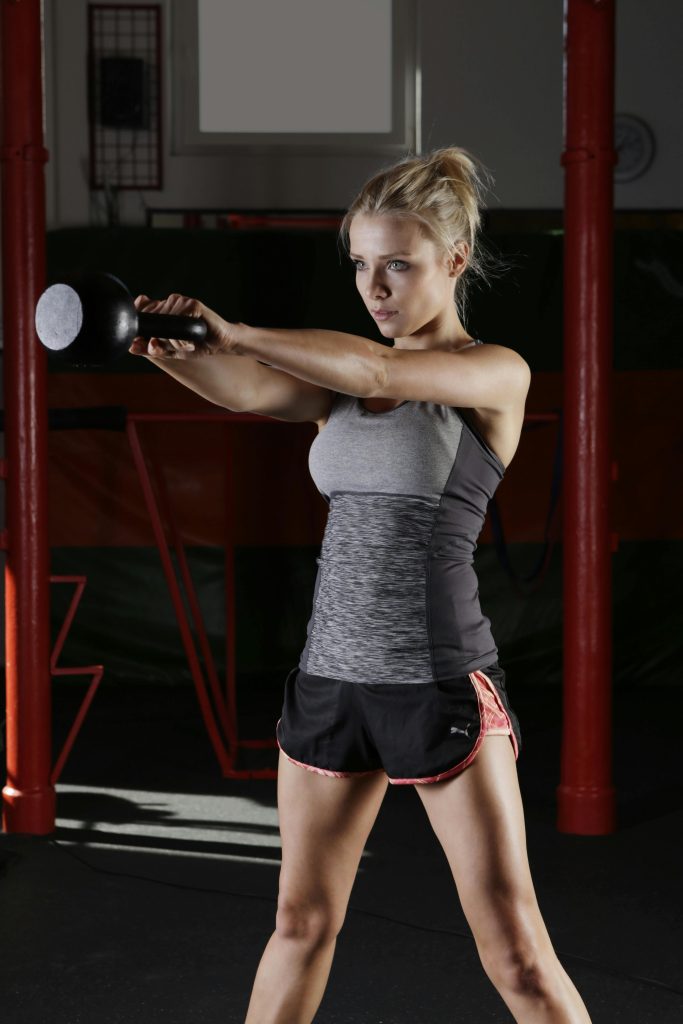Nowadays, the number of women attending the gym is equal to or greater than the number of men. Ladies dream of losing weight and sculpting their figure. They often perform long and monotonous cardio workouts because they are afraid to reach for a barbell or any other load. The thought of excessive growth of muscle structures immediately appears. Read a few tips to avoid making standard beginner mistakes.
Fear of becoming a “bodybuilder”
Many times, when writing out a training plan with weights, I see fear in women’s eyes and a look asking “will I look like a man”. Calmly! Nature took care of it itself. A woman’s body produces a much smaller amount of testosterone than a man’s, so a woman is not able to build as much muscle mass as a man. This fact should be a very convincing argument to change your mind about strength training.
Here are some factors that determine muscle tissue growth:
- sex
- genetics
- Type of training
- caloric supply
- Distribution of macro/micro nutrients in the diet
- testosterone levels
- Training volume
As you can see, the list of factors is long, and the mere fact of doing a workout does not guarantee an immediate effect. So carry it, girl! Swap the pink dumbbells for a heavier weight. Your body will thank you for it, it will become firmer and more resilient. Your muscles won’t get rounded from lifting loads equal to the weight of your smartphone.
Incorrect exercise technique
If you have already decided to start strength training, there are two more barriers that I often observe in women, namely:
- fear of entering the “free weights zone”
- maintaining the correct movement pattern during exercises
While the first problem is in your head and it is only up to you to overcome it, there is much more work to do with the exercise technique than it seems. Technique is extremely important, because it determines how effective the exercise is. Let’s take a closer look at the squat, where many variables such as its depth, foot spacing, body angle, etc., affect the group of muscles involved. Here there are several solutions. You can gain knowledge from:
- Internet
- Tips from friends
- observations of other people exercising at the gym
- use the help of a personal trainer
Remember to approach each source of knowledge sensibly, it is best to verify it in at least 2 places. This should reduce mistakes and save you from unwanted injuries.
A pointless diet?
My dear! Nothing could be further from the truth! By providing fewer calories, your body has no “fuel” to act, it will not build new muscles, the training will be low intensity, and the results will be poor! You won’t even be able to do a structured workout because you won’t have the strength to do it. You’ll do half of your planned exercises and go home unhappy that you didn’t manage to do everything. You will start wondering what you are doing wrong if you can’t see the effects, so you cut your caloric supply even more and the scenario repeats itself because you have even less strength. This is not the way! A well-balanced diet + a training plan for a given goal is the key to success. Don’t forget that!
Perceiving the squat as the best exercise for the glutes
It is not difficult to notice the ubiquitous trend for large Brazilian buttocks. Many women dream of round buttocks like Jennifer Lopez’s. There is a widespread fashion on the Internet to perform barbell squats. Without taking away from this effective and comprehensive exercise, there is one fact that is not openly discussed. The squat significantly engages the quadriceps muscles of the thighs.
There are some tricks by which we can trigger a stronger stimulus on the gluteal muscles, for example; By spreading your legs wider, changing the angle of your body. Personally, I advise against doing “sits” for beginners. I recommend learning the so-called muscle sensation on machines and simpler exercises, such as squats with a kettlebell. It is a great introduction to the world of weights, and at the same time we can easily catch basic mistakes in technique and deficiencies that will prevent us from performing a proper barbell squat in the future, such as lack of mobility in the biceps muscle, ankle joint or lumbar spine.
